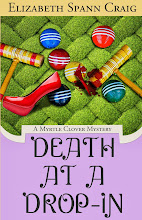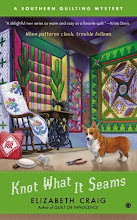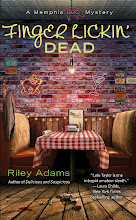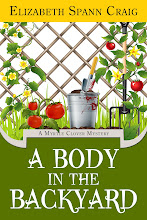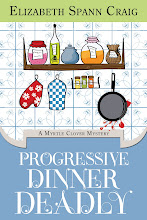First of all, thanks to my guest blogger, Charlotte Bowen today! Charlotte blogs at http://www.fictionette.org/, is revising her first novel and writing her second. She’s on Twitter at @acbowen.
******************
Historical Research.
Those two simple words can strike fear into the heart of any writer, be she ever so mettlesome otherwise. For those without much knowledge of a piece’s era, research often seems an insurmountable task.
The notions that research is difficult or intimidating and that historical fiction requires 100% authenticity (or else don’t bother) is perpetuated by academics, historical researchers, and -- to be frank -- novelists who can't be bothered or are too frightened themselves to do research. These people have a lot invested in maintaining that untenable attitude. The academics and researchers are looking to put their profession (a noble one, admittedly) on a pedestal, and the novelists want to justify their laziness or pass on the fear others have instilled in them.
Don't let them dissuade you from research.
The truth is that there is really only one reason to include authentic detail in your pieces: To strengthen and clarify the mental image your prose calls forth in your readers. Any advice you take and any detail you include in your pieces should be directed toward that end.
"Enough" Authenticity?
Writers perpetuating historical myths make knowledgeable people cry. If I ever again read that people in the Middle Ages bathed only once a year, for example, I might go postal.
Bad history throws your readers out of the text. If you call your Renaissance Venetian character Jennifer instead of the more authentic Ginevra, for example, many readers will shudder every time they read the name. Eventually these infelicities compound upon themselves to totally frustrate readers, leaving them less able to engage with your story and characters.
Take the time to get the basics right. Names, dates, and places should be nailed down first, as should titles if your book concerns the military, nobility, or holy orders. Branch out from there as far as your taste or plot calls for. Details of dress, occupations, and language are good places to go once the basics are in place.
How Authentic is Too Authentic?
Don't respond by going the other way, however. While obsessive authenticity might allow you to pack a lot of interesting facts into your novel, facts without a purpose actually detract from your story by bogging readers down in endless descriptive window-dressing.
While it's interesting that Constantinople's cisterns were constructed with columns taken from ancient temples, turned upside down so that the Medusa's heads lie submerged in feet of black water -- for example -- 10 pages of detail with the exact genus and species details of the mosses growing in the cistern is not.
This goes for details of language, as well. While a few sprinkled "good morrows" lend a pleasant historical air to your writing, having your hero cry "Thou dost me sle!" when his lady spurns him for another is simply overwrought -- even if that is authentic straight-outta-Chaucer Middle English.
Historical facts are like movie special effects. They can really spice up the visuals when done well, but are too often used as whiz-bang puffery to showcase the director's technical capabilities or (worse) to hide gaping plot holes. Don't do that to yourself, your readers, or your characters.
Drawing the Line
The "sweet spot" between rampant anachronism and pedantry is different for every piece. The best advice (as with any other piece, historical or not) is to focus on your characters, your plot, and your storytelling. If the interesting tidbits you've found will advance one of these three things, use them. If not, don’t. Let the work tell you what it needs.
This attitude also makes it much easier to compile a list of things to begin researching. Create a basic plot outline and work from there. If the denouement of your novel involves a sword fight in a chapel, for example, you should research the date and layout of possible chapels, swords from the era, and sword fighting technique. These are still broad categories, but it's easier to work with these than something even broader, like "Scotland, 1543."
Breaking the research down into manageable parts reduces overwhelm and leaves you with a better finished product.
Where To Start
Art - This is one of the easiest ways to get a feel for an era. Not only do paintings, drawings, and photographs give you an idea of what people wore and how they lived, but each era has a certain spirit that comes alive in the artwork.
Period literature - Even in translation, period literature can provide a wealth of information on social customs and mores, clothing, decor, and -- of course -- language. Look for poetry, novels, and (especially) letters from your era at the local library or online. Since most period literature (and the Victorian-era translations thereof) is in the public domain, you should have little trouble finding something that suits your purpose.
Other historical novels - Some authors include a selected bibliography at the back of their books, or on their website. Other authors -- Dorothy Dunnett, for example -- have spawned reference books of their own. If there is a living author you particularly admire, seek him out. He might be able to point you in the right direction. Novelists with extreme attention to authenticity and detail (like Dunnett and Patrick O'Brien) are also your best models for how to incorporate into a compelling narrative all the facts you do find.
Historical research societies - Find these through Google or the phone book. These research societies tend to focus on one place, time, or thing. For example, the Association for Renaissance Martial Arts is a fantastic resource on swords and sword fighting in the Middle Ages and Renaissance. The Academy of St. Gabriel helps historical re-enactors to choose authentic Medieval names. Even if your topic is obscure, it probably has some enthusiasts or associations dedicated to its study.
Colleges/Universities - See if your local college will let you audit a class on your era of interest. Not only will you learn a lot but you’ll also get access to the college library, which will have a greater number and quality of research resources than any public library, and to other professors who, by and large, will be thrilled to go on with you at length about their favorite subjects.
Online mailing lists - Google Groups and Yahoo Groups host many historical research mailing lists aimed at re-enactors. Re-enactors are a fantastic resource for writers. Not only do they have a good overview of the available research literature -- they've actually done and eaten and worn some of the things you'll be writing about. Don't be afraid to approach a mailing list with some of your questions or search the archived messages for relevant material.
eBay and Etsy - There's nothing quite like holding a piece of history in your hand. If your piece falls somewhere after the 1810s, there's a good chance that you'll be able to find old photos, clothing, and household items on these websites. Even if you don't purchase anything, the auction pictures and descriptions will give you a feel for what real people saw and wore every day.
*********
Thanks so much for such an informative post on researching, Charlotte! I have a historical saga in my head for “someday,” (when I don’t have kids at home, probably!) and will definitely cut and file your tips for researching.






